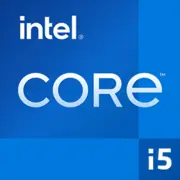Intel Core i5-12600

インテル コア i5-12600:2025年版プロセッサの包括的レビュー
最新の仕様、ビルドのヒント、ターゲットユーザーの分析
1. 主要な仕様:アーキテクチャ、プロセス技術、パフォーマンス
ハイブリッドアーキテクチャ Alder Lake
インテル コア i5-12600は2021年末に発売され、バランスの取れたアーキテクチャにより2025年でも依然として重要な存在です。このプロセッサは、Performance-cores(Pコア)とEfficient-cores(Eコア)のハイブリッド構造を採用しています。この場合は、6つのPコア(12スレッド)を搭載し、Eコアはありません。これは、i5-12600Kのような上位モデルとは異なる点です。Pコアはゲームやシングルスレッドタスクでの高パフォーマンスを担当し、Eコア(ここには存在しない)は通常、バックグラウンドプロセスを最適化します。
インテル 7プロセス技術
インテル 7技術(以前は10nm Enhanced SuperFinとして知られていました)は、エネルギー効率と高いクロック周波数を実現します。基本クロックは3.3 GHzで、Turbo Boostにより最大4.8 GHzに達します。これにより、このプロセッサはシングルスレッドシナリオにおいてAMDの新しいモデルと競争できるのです。
パフォーマンスとキャッシュ
18MBのL3キャッシュはデータ処理を加速し、Geekbench 6の結果(シングルコア2364、マルチコア9780)がレンダリングやゲーム、多重タスクにおける強さを証明しています。比較として、Ryzen 5 7600は約2400/10500ですが、価格は10-15%高く(i5-12600は約$200に対して$220)なっています。
主な特長
- 統合グラフィックスUHD 770:オフィスPCや画像出力のバックアップに適しています。
- PCIe 5.0サポート:SSDやグラフィックカードに対する未来志向。
- インテルスレッドディレクター技術:Windows 11でのコアへの負荷の最適化。
2. 対応マザーボード:ソケットとチップセット
LGA 1700ソケット
プロセッサはLGA 1700ソケットを使用しており、600シリーズと700シリーズのチップセット(H610、B660、H670、Z690、B760、Z790)と互換性があります。しかし、i5-12600にとっては上級のZ690/Z790を選ぶ意味はありません—これらはオーバークロック向けに設計されており、ここでは利用できません。
最適なチップセット
- B660/B760:大多数のユーザーにとってのベストチョイス。PCIe 5.0をサポートし、DDR4/DDR5(モデルによる)、2-4のM.2スロットをサポートします。例:
- ASUS TUF Gaming B660-Plus WiFi(DDR4、$140);
- MSI PRO B760-P WiFi(DDR5、$160)。
- H610:予算向けのオプションですが、PCIe 5.0はなく、RAMの制限があります(最大3200MHz)。オフィス用のビルドに適しています。
選択時の注意点
- マザーボードがDDR4またはDDR5をサポートしていることを確認してください—これはRAMのコストに影響を与えます。
- 将来的なアップグレードを考慮すると、ビデオカード用にPCIe 5.0 x16のモデルを選ぶ方が良いです。
3. サポートされるメモリ:DDR4 vs DDR5
DDR4-3200:予算の安定性
i5-12600用のほとんどのマザーボードはDDR4をサポートしており、コストを抑えることができます。16GB(2x8)のDDR4-3200キットは約$50で、ゲームでのDDR5との性能差は最小限(1080p解像度で5-10%)です。
DDR5-4800:未来の余裕
DDR5は高価ですが(16GBは$80)、高帯域幅のタスク(ビデオ編集、3Dレンダリング)での利点があります。2025年までにDDR5の価格は下落し、新しいビルドにとって魅力的な選択肢となっています。
推奨事項
ゲームや日常のタスクにはDDR4を、予算が許す場合はプロフェッショナルなタスクにはDDR5を選びましょう。
4. 電源ユニット:出力計算
TDP 65W — システム全体の65Wとは限らない
プロセッサは最大65Wを消費しますが、グラフィックカードやその他のコンポーネントを考慮すると、余裕が必要です。
構成の例
- 統合グラフィックス:400W電源ユニット(例:be quiet! Pure Power 11 400W、$60)
- ディスクリートグラフィックカード(RTX 4060):550-600W(Corsair CX550M、$70)
- 高性能GPU(RTX 4070 Ti):750W(Seasonic Focus GX-750、$120)
選択基準
- 80+ Bronze以上の認証。
- ビルドの利便性のためのモジュラー設計。
5. 利点と欠点
強み
- エネルギー効率:65W TDP対105WのRyzen 5 7600。
- 統合グラフィックス:基本的なタスクに別のGPUが不要。
- 価格:約$200(新品)対$220-250の競合製品。
弱点
- Eコアなし:i5-12600Kに比べ、多スレッドシナリオでの効率が劣る。
- オーバークロックの制限:倍率をサポートせず(Auto Boostのみ)。
6. 使用シナリオ
ゲーム
ゲームにおける平均FPS(1080p、高設定):
- サイバーパンク2077:約65 FPS(RTX 3060の場合);
- フォートナイト:約144 FPS(RTX 4060の場合)。
作業タスク
- Premiere Proでのビデオ編集:4K動画のレンダリングに12-15分。
- プログラミング:高いIPCによりコードのコンパイルが迅速。
マルチメディア
OBSでのストリーミングは遅延なし(NVENCまたはQuick Sync使用)。
7. 競合他社との比較
AMD Ryzen 5 7600
- プラス:多スレッド性能が高く、DDR5-5200をサポート。
- マイナス:高価で、AM5の高価なマザーボードを必要とする。
インテル コア i5-13400
- プラス:Eコアが4つ増え、マルチコア性能が向上。
- マイナス:価格が$230で、LGA 1700が必要(同じボードとの互換性)。
結論:i5-12600は予算型ビルドに優れていますが、多スレッド性能では劣ります。
8. ビルドの実用的なヒント
$800の構成例
- CPU:インテル コア i5-12600($200);
- マザーボード:MSI PRO B660M-A DDR4($130);
- RAM:16GB DDR4-3200($50);
- SSD:1TB NVMe(WD Blue SN580、$70);
- PSU:Corsair CX550M($70);
- ケース:Deepcool MATREXX 40($60)。
重要なポイント
- TDPが100W以上のクーラーを選択してください(例:Deepcool AK400、$35)。
- ゲーム用にRTX 4060レベルのグラフィックカードを追加してください($300)。
9. 最終的な結論:i5-12600は誰に適しているか?
このプロセッサは以下のユーザーに最適です:
- ゲーマー、エントリーからミドルレンジのPCを組み立てる人。
- オフィスユーザー、信頼性と静かな動作を重視する人。
- エンスージアスト、2-3年後のアップグレードを計画している人(PCIe 5.0のおかげで)。
なぜこのプロセッサか?
価格、性能、エネルギー効率のバランスが良いため、i5-12600は2025年において最高の選択肢の一つです。最高の性能を追求していないが、技術の安定性と最新性を重視するユーザーに適しています。
基本
CPUの仕様
メモリ仕様
GPUの仕様
その他
ベンチマーク
他のCPUとの比較
ソーシャルメディアで共有する
または当サイトへのリンクを追加
<a href="https://cputronic.com/ja/cpu/intel-core-i5-12600" target="_blank">Intel Core i5-12600</a>